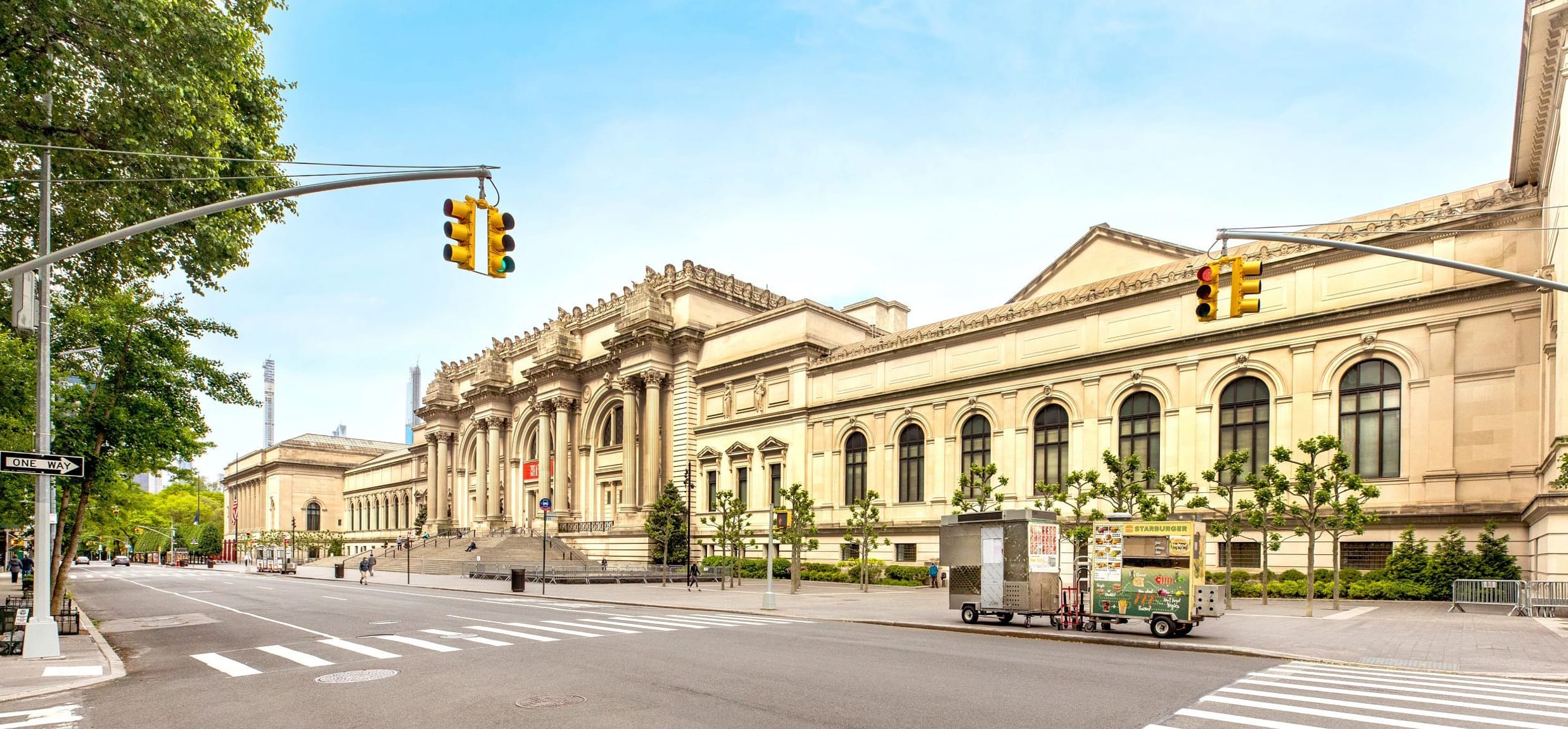Metropolitan Museum of Art

The Metropolitan Museum of Art is located on the east side of Central Park between 79th and 84th Street. Since its founding in 1870, the museum collections and building have grown from a single gallery to the monumental building of today.
A museum had always been part of the plan for the Park. In their initial 1858 proposal, Park designers Frederick Law Olmsted and Calvert Vaux proposed converting the existing Arsenal building into a museum. The Arsenal functioned as an exhibition space for objects, as well as animals, that had been donated to the Park but was too small to accommodate its growing collection. In 1865, American architect Richard Morris Hunt created an elaborate plan for an expansion, but it was never realized, in part because it was too large for the site. Works of art were later exhibited in the Park at one of the buildings in the northern section, part of the former convent of Mount St. Vincent, until it burned in 1881.
In 1867, members of the Union League Club, an elite gentlemen’s social club, formed a committee to begin advocating for a major metropolitan art museum in New York City. The committee included Park proponent William Cullen Bryant, administrator Henry G. Stebbins, and the architect Hunt. The group officially established the Metropolitan Museum of Art in 1870 and began by hosting public exhibitions in a location on Fifth Avenue and 53rd Street.
In 1874, the park commissioners offered the committee land in Central Park for the construction of a museum building and asked Park architect Calvert Vaux to design it. Vaux created a plan for a High Victorian Gothic building with multiple wings that spanned the area of the Park between 79th and 84th Streets and extended to the East Drive.
In 1880, the first Vaux-designed wing of the Metropolitan Museum of Art opened to the public. Although Vaux’s master plan for the whole museum was never realized, future expansions did reach his proposed footprint. During the early 20th-century, the monumental Fifth Avenue entrance hall and façade were designed by the American architect Richard Morris Hunt. After Hunt, the architectural firm McKim, Mead and White designed five wings. Several other wings were added in the mid-century, which also saw major interior renovations.
When Thomas Hoving became the director of the Met in 1966, after serving as Park Commissioner, he ushered in a new era of modern additions to the building, including the Temple of Dendur and the Lehman Wing. The areas of the museum that face into the Park are primarily these more modern additions, notable for their large glass walls and geometric austerity.
